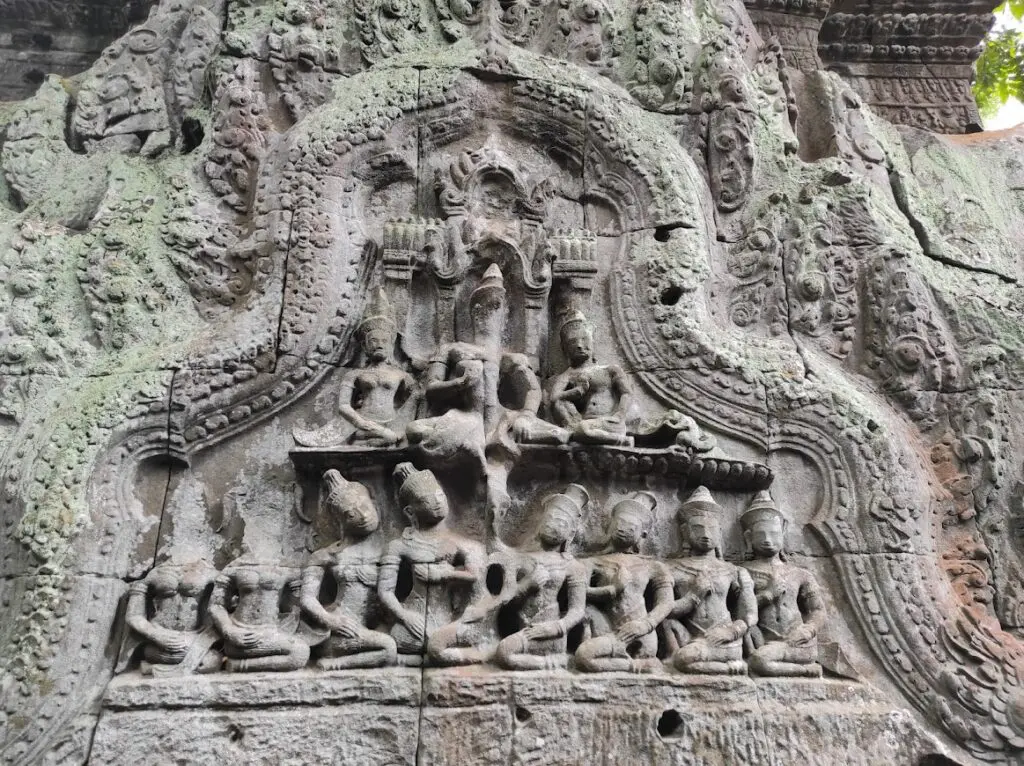The Ruins of Ta Prohm
- Shannon
- May 14
- 3 min read
Updated: May 17
While Angkor Wat stands in meticulously restored grandeur, Ta Prohm has been surrendered to the wild embrace of the jungle. Towering silk-cotton trees and strangler figs entwine themselves around crumbling sandstone walls, their roots creeping through sacred corridors like ghostly fingers reclaiming what was once theirs. This temple complex was constructed in 1186 AD during the reign of King Jayavarman VII, one of the most prolific and devout rulers of the Khmer Empire.

The King launched an unprecedented wave of construction that eclipsed everything the Khmer Empire had seen before and Ta Prohm was the centrepiece of his master plan. Originally called Rajavihara, meaning "Monastery of the King" & unlike many temples dedicated to the Hindu deities, Ta Prohm was built to function as a monastic complex and was dedicated to the king’s beloved late mother. As written on the temple's stele inscription, the king dedicated the central sanctuary to his mother, deifying her as "Prajñāpāramitā", the Buddhist goddess of transcendent wisdom.
The temple compound covered approximately 1,000 acres, making it a massive structure for its time. At its peak, it is estimated Ta Prohm supported around 12,500 people, including monks, priests and various support personnel. An additional 80,000 people lived in the surrounding villages, working to provide services and supplies. At the height of its success, the monastery amassed considerable riches, with records indicating a vast collection of gold, precious stones, pearls and other valuable items.
Ta Prohm was a vast monastery and university, featuring a central sanctuary for worship, surrounded by cloisters, monastic quarters, libraries and courtyards for ceremonies and meditation. The complex included devotional shrines, pillared halls for gatherings and water reservoirs for ritual and daily use. Enclosed by large walls and accessed through ornate gateways, the temple was richly adorned with carvings and religious symbols. Today, its most iconic feature is the massive trees and roots entwined with its ruins.

When the capital city of Angkor was sacked by the Siamese during the early 15th century, and the Khmer empire fell, the temple was abandoned and swallowed by the jungle. After over 400 years of neglect and decay, Ta Phrom was rediscovered by French explorers around the 1860's and became world famous in 2001 when it was used as a location in the film Tomb Raider.

Location : Angkor Archaeological Park, Krong, Siem Reap Province, Kingdom of Cambodia
How to get there : Located approximately one kilometre east of Angkor Thom, Ta Phrom is on the southern edge of the West Baray, 12km from the centre of Siem Reap. It’s along the main road which the Angkor Small Circuit Tour follows and is included in all intineries
Attraction Info : Admission is included with the Angkor temple pass. Entrance fees are structured to accommodate various itineraries. A 1-day pass is $37USD, a 3-day pass is $62USD and a 7-day pass at $72USD. Tickets can be purchased at the official Angkor Ticket Office or online. Generally 3 days is sufficient time to explore the wider area. Temple grounds are open between 7:30am - 5:30pm.
ប្រាសាទតាព្រហ្ម
Official Website : https://www.angkorenterprise.gov.kh/

Thanks for reading about The Ruins of Ta Prohm. Check out more destinations here!
The bas relief of a stegosaurus has become a popular piece of evidence for the fringe belief that dinosaurs once coexisted with humans however it is unlikely that the presence of dinosaurs in Cambodia only a few centuries ago would not have been documented in any other way than through a single relief in a single temple


























